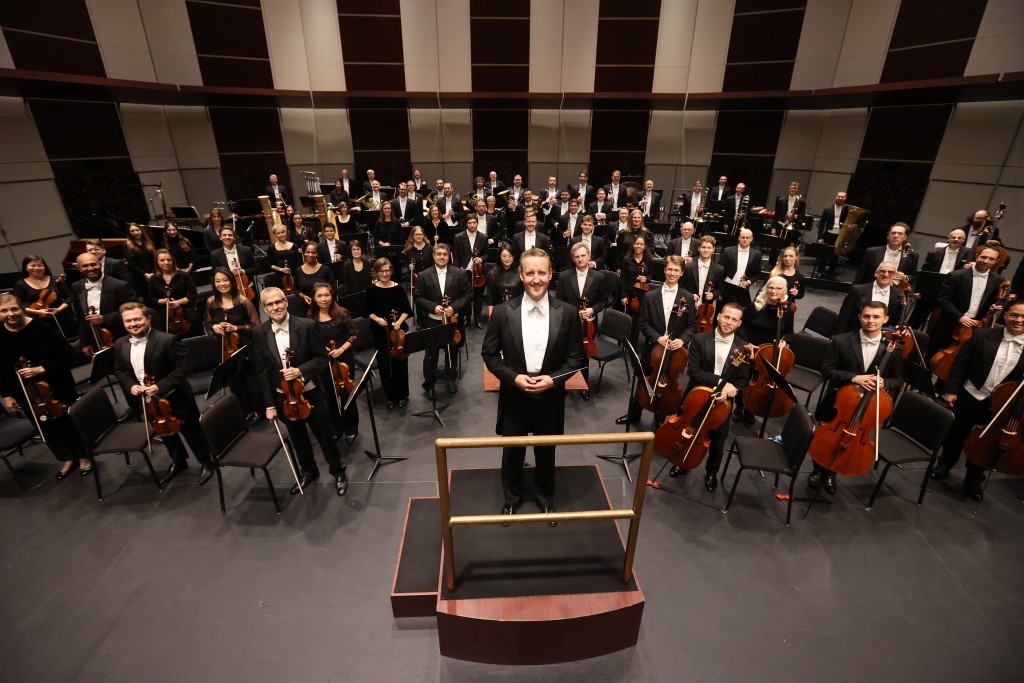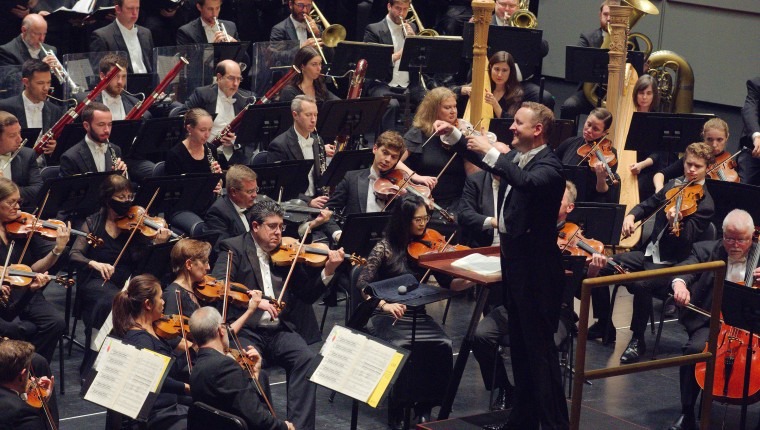April 5-7
Tampa, St Pete, Clearwater
Details here
What’s the most influential piece of music of all time? What work changed everything after its first performance, and forced the world to take notice?
Good luck coming up with a definitive answer. I’ve given it a lot of thought over the years, and although I’m less reverential about so much music from my younger days, one piece still stands above all else – Beethoven’s Symphony No. 9.
You might agree, and like me, be hard pressed to find a better choice. But Michael Francis, The Florida Orchestra’s Music Director, insisted I call him after he read my text asking for his choice for classical music’s numero uno.
“I would have to say the Eroica,’’ Francis stated, referring to Beethoven’s Symphony No. 3. “The Ninth is a summation of all Beethoven achieved – and yes, it’s big and revolutionary. But not more than the Eroica.’’
Well, there you have it. Francis went on with his argument, but it wasn’t enough. He will prove his point beyond words alone – on April 4 he gives a talk exploring this work before leading the orchestra in three performances of the Eroica April 5-7 in Tampa, St. Pete and Clearwater.
The concerts include The Chairman Dances: Foxtrot for Orchestra by John Adams and the Second Piano Concerto of Shostakovich, with soloist Natasha Paremski.
At just under 50 minutes, the Eroica (“Heroic’’) is the longest symphony up to its time (1805) – and with it, Beethoven broke new ground on a number of fronts.
He expanded the physical architecture of the sonata-form model, created an unprecedented unity of musical ideas and harmonies, and delivered an emotional punch that knocked the receding classical era back on its heels. More than any other work, it served as a bridge to the soon-to-be roiling Romantic age.
“There are certain works that are immediate masterpieces, where and when a composer reaches maturity,’’ Francis says. “With Brahms it was his First Symphony. With Mozart, it was the Piano Concerto No. 9. With Beethoven, it was the Third.’’

Originally planned as the “Bonaparte’’ Symphony in tribute to Napoleon, Beethoven rededicated it in anger after the conqueror crowned himself emperor, but the concept of a noble hero echoes throughout the renamed Sinfonia Eroica.
Through sheer elemental force, Beethoven carved the music into a distinct personality – a true narrative that would be embraced by composers throughout the 19th century.
Introduced by two stentorian chords, the opening movement alone is gigantic and more expressively charged than any previous symphony, notes the Beethoven biographer Jan Swafford. “If the emotion of Mozart seems shrouded behind an elegant mask, and in Haydn behind his equanimity, the emotion in Beethoven is raw and face-to-face.’’
The work drew expectations for how symphonies would be cast. While Haydn and Mozart together produced nearly 150 such works, most major composers after Beethoven capped their output at less than 10 − almost as if in deference to him. He pushed the boundaries of classical form further by inserting a funeral march, a radical choice. He followed with a scherzo full of optimistic energy, and a finale of 10 variations based on a theme from his own Creatures of Prometheus.
In the slow movement, a searing adagio in C minor, Beethoven takes us into a ghostly realm never before heard in a symphony. This dramatic section includes a fugal lament worthy of Bach, an impassioned cry that begins and ends in silence.
If the original intent was to honor the death of a great man, the funeral march also speaks of anguish, as Beethoven knew he was losing his most precious gift − his hearing.
“The first movement is all about what a real hero is, about true heroism,’’ Francis adds. “The funeral march is the greatest musical outpouring of human grief. The third movement is a celebration. And the fourth movement is about Prometheus, this unbelievable power that gave us wisdom and freedom.’’
In the finale, Beethoven again tests the waters of classical-era structure by pursuing a series of variations that confounded early listeners and critics. It would later become apparent in a logical plan as the music gathers momentum, intensifies and weaves together earlier themes into a brilliant – and fearless − coda.
“It’s the first truly Romantic symphony in scale and structure,’’ Francis says. “It changed everything. It’s epic.’’
The Florida Orchestra
Friday, April 5 at 8 pm
Straz Center, Tampa
Saturday, April 6 at 8 pm
Mahaffey Theater, St. Petersburg
Sunday, April 7 at 7:30 pm
Ruth Eckerd Hall, Clearwater
floridaorchestra.org
Originally published in the Florida Orchestra Blog




